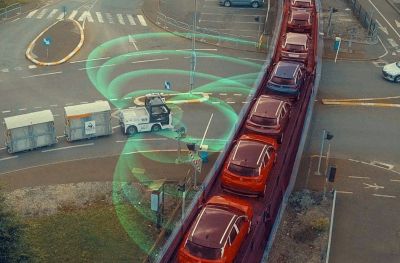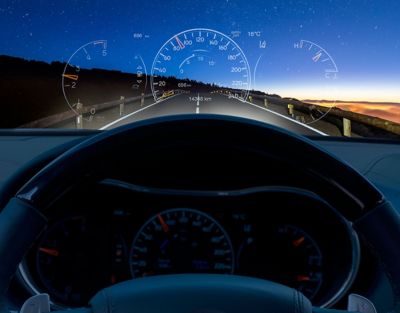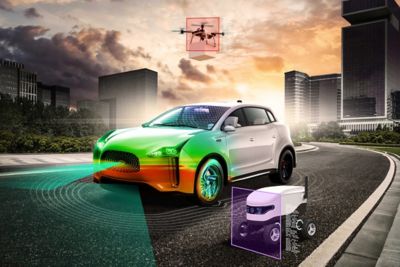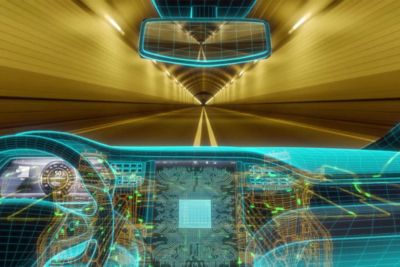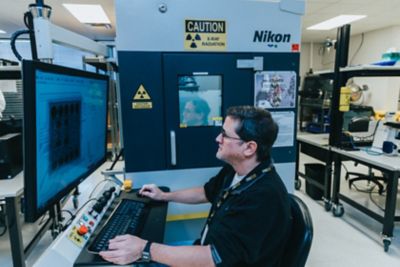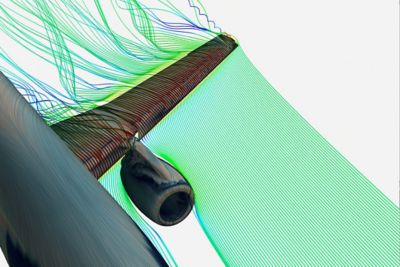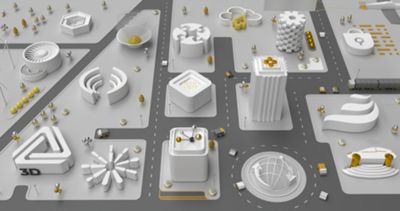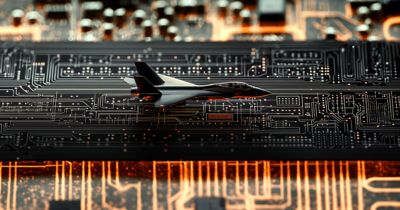-
United States -
United Kingdom -
India -
France -
Deutschland -
Italia -
日本 -
대한민국 -
中国 -
台灣
-
Ansys is committed to setting today's students up for success, by providing free simulation engineering software to students.
-
Ansys is committed to setting today's students up for success, by providing free simulation engineering software to students.
-
Ansys is committed to setting today's students up for success, by providing free simulation engineering software to students.
-
Contact Us -
Careers -
Students and Academic -
For United States and Canada
+1 844.462.6797

Imagine grabbing a warm cup of tea and sitting down for a video call with a loved one. You turn on your computer and launch the app, taking a quick glance out your window as you wait for the other person to log on. Likely, this situation sounds familiar.
But what if, instead of a yard or cityscape, you’re viewing the darkness of space and the ancient rock formations of the Moon? In this scenario, “the history of the solar system is sitting outside of your window,” says James Wertz, president of Microcosm Inc. and an adjunct professor of astronautics at the University of Southern California. “The Earth is sitting there, and you’re watching the people you’re talking to, and they’re watching you.”
Wertz says our ability to achieve such a scenario is not only feasible but possible in the not-so-distant future. Figuring out how to achieve this in the near term, however, is not straightforward. Despite this, it is an important goal from a scientific and commercial perspective — and possibly for humanity as a whole. After all, the Moon is something that all 8.2 billion of us share, says Wertz
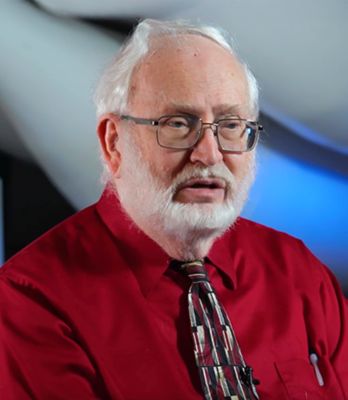
Jim Wertz
In this interview, Wertz shares more about his personal views on the future of space and the potential for a lunar colony.
Q: What are the space industry’s main areas of growth today?
Wertz: I would say that the main areas of growth at the present time are primarily twofold. One is the continuing growth of constellations of small satellites in low Earth orbit. There continue to be more and more of them, and that’s going to certainly continue to be the case. We’ll see a very large number of small satellites that are relatively low-cost individually and fairly expensive collectively. The other area of growth is an increased interest in the Moon, Mars, other planets, and moving beyond low Earth orbit and further into the solar system.
Q: From your perspective, what are the challenges of developing a settlement on the Moon? What next steps must we take to achieve this kind of settlement?
Wertz: My view of the world is very different than the general view of the world. So, as a consequence, I’ll try to give you a little bit of both. …
One problem is that the programs are very expensive, which tends to drag them out in time. Also, when the administration changes, the priorities that NASA have change, which tends to slide things downstream. …
My view of the world is that three things have to happen:
- The cost of transportation has to come down. That is likely to occur with either SpaceX or Blue Origin, which could bring the cost of transportation down dramatically.
- In addition to that, we need to change how things get done. My suggestion is to go from a large, science-driven program to a commercial program. … (In general, people) would like to have something more pragmatic that will benefit them in the near term. … The merit of a commercial program is that it intends to speed things up dramatically.
- Creating a large lunar enclosure where most of the lunar activity is done within rather than outside. That, in turn, means that we can use the same equipment here as on the surface of the Earth because we’re inside an enclosure on the Moon. It’s basically the same as going out in your garage and building something. You can use the same equipment; the only difference is that everything weighs one- sixth as much. … Your iPhone is still going to work, your computer is still going to work, your dishwasher is still going to work, and the laundry machine is still going to work. All these things would work just fine.
Q: Could you tell us more about what a lunar colony could look like?
Wertz: Part of what I want to do is to populate the Moon with people. … If you look at an image from NASA, everybody’s outside in a spacesuit, and they’re walking around. In fact, a large fraction of the jobs (in a lunar colony) are inside jobs.
The example that I like to choose is the ambassador from Portugal to the Moon. What does the ambassador from Portugal to the Moon do? Well, first of all, he takes care of the two or three Portuguese citizens who visit the Moon that year. … A large fraction of the remainder of his time will be spent on the internet talking to classes in Portugal about what it’s like on the Moon, expanding into the solar system, and convincing them that they, as Portuguese students, should take part in this expansion into the solar system.
The key issue is that this has to be done in Portuguese. The Portuguese government does not want students in Portugal to learn about life on the Moon in French, Spanish, or English. They want to convince Portuguese students that Portugal needs to be a part of the expansion into the solar system. As do other countries, of course.
And there are going to be other jobs on the Moon. I would argue that quite a few of them would be people who will raise the food, cook the food, clean things, repair things, buy supplies, and fulfill all sorts of tasks that would happen in a small town. But these are not astronauts. …
If you ask the average space science expert, they will tell you that they’re astronauts and selenauts and cosmonauts, and they get six months or maybe a year or two of training.
They go through this in order to work on the surface of the Moon. That’s true for a few people but only for very few. There are a lot more people who don’t need that training.
… A large fraction of jobs on the Moon don’t require that training because there are ordinary jobs there for ordinary people.
Q: How would your vision of a lunar settlement benefit humanity as a whole?
Wertz: It does benefit humanity as a whole in several ways. The biggest, by far, is in the potential scenario that Earth becomes uninhabitable. That could occur because of the climate activities that we’ve started to see happen or the real possibility of a nuclear war. If that happens, it is certainly possible that life on Earth becomes nonviable. …
To me, one of the major advantages of the Moon is that Earth’s civilization now continues. A lunar settlement can also make life better for people on Earth, and there are a couple of ways we can go about doing that. One is to provide energy for people on Earth, and there are actually a couple of things there that you can do. Solar-power satellites can beam power back to places that don’t have power.
Another possibility that one or two companies are working on is nuclear power via Helium-3. Helium-3 is available in the lunar wind and the solar wind. It, therefore, comes to the Earth and the Moon. On Earth, it’s not there in a significant enough quantity that you can recover it in any way. But on the Moon, it lands in the lunar regolith. That regolith is dramatically old. … It’s in the order of 100 million years old, and some of it’s probably older than that.
So, there’s been an opportunity for the Helium-3 to land on the lunar regolith and accumulate over the course of time. It’s still in small quantities, there’s no doubt about it, but it’s in large enough quantities that you could mine it and bring it back to Earth.
The advantage of Helium-3 for nuclear power is that it has no radioactive byproducts, which is huge. If I can create nuclear power without generating nuclear waste, I can create more or less unlimited power for people on Earth and people on the Moon.
Q: What role could simulation play in developing, maintaining, or growing lunar colonies?
Wertz: Simulation indeed has a role to play here. As I grow, I’m going to be doing all kinds of new things, and what I want is the potential to test these new approaches without having to go out and physically build and launch. That’s a remarkably long and expensive process.
Simulation dramatically drives down both the time and the cost, and that’s important to be able to proceed. Being able to run a simulation, understand what’s going to happen and what it can do, and combine simulation with analysis and real experiments — I want to do all of this. Doing all of these things helps me move forward much faster than I otherwise could.
What we’ve seen is a system that is moving dramatically slowly. People are talking about colonizing the Moon 30 years from now. It can occur much faster than that, but simulation plays a major role in that activity in terms of showing people what’s workable, what’s usable, and what doesn’t have to be as precise as it perhaps once was.
Get a sneak peek of the Ansys documentary, "Simulating Space."
"Simulation indeed has a role to play here. As I grow, I’m going to be doing all kinds of new things, and what I want is the potential to test these new approaches without having to go out and physically build and launch. That’s a remarkably long and expensive process."
— Jim Wertz, President, Microcosm Inc.
The Advantage Blog
The Ansys Advantage blog, featuring contributions from Ansys and other technology experts, keeps you updated on how Ansys simulation is powering innovation that drives human advancement.
